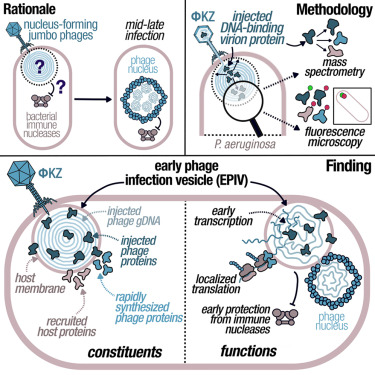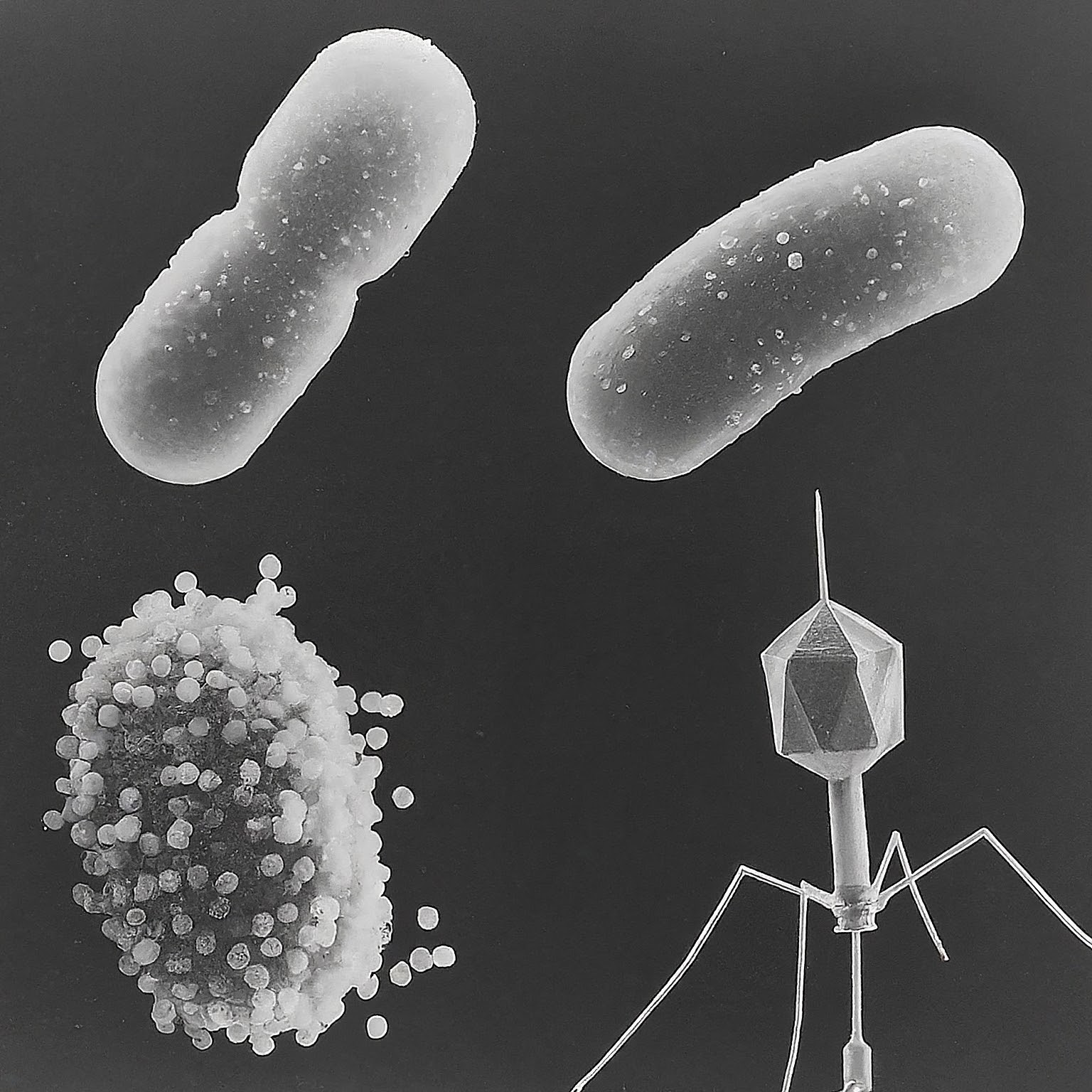- Host membrane and membrane proteins are rapidly recruited during phage ΦKZ infection
- Host lipids and injected phage proteins assemble a vesicle executing early transcription
- Early-expressed phage proteins are recruited to the vesicle, with some binding ribosomes
- Vesicle protects the injected genome from nucleases prior to phage nucleus assembly
Viral genomes are initially vulnerable to cellular defenses during the infection process. A family of jumbo phages, including phage ΦKZ, assembles a protein-based phage nucleus to protect replicating phage DNA. However, the means of protection before nucleus assembly remains unclear. Host proteins related to membrane and lipid biology interact with injected phage protein, forming an early phage infection (EPI) vesicle. The injected virion RNA polymerase (vRNAP) initiates early gene expression until the phage genome separates from the vRNAP and the EPI vesicle, entering the developing proteinaceous phage nucleus. Enzymes involved in DNA replication and CRISPR/restriction immune nucleases are excluded by the EPI vesicle. It is suggested that the EPI vesicle is rapidly formed with injected phage proteins, phage DNA, host lipids, and host membrane proteins to facilitate genome protection, early transcription, localized translation, and to ensure accurate genome transfer to the proteinaceous nucleus.

Read here: https://www.cell.com/cell-host-microbe/abstract/S1931-3128(24)00188-4

